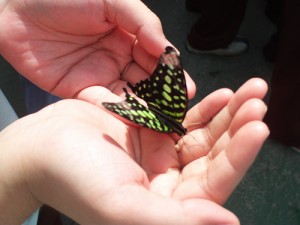 Are you and your child well today?
Are you and your child well today?
This can be a stressful time of year. Lots of excitement, changes in routine, extra “to-do’s” on an already full list.
WRAP is especially important at times like these.
What’s WRAP?
Wellness Recovery Action Plan is a simple yet powerful structured process developed by Mary Ellen Copeland.
A WRAP is personal (no two are alike). And WRAP is universal (any child or adult can develop their own WRAP).
By careful observation, we identify our own “wellness tools”. The simple things we choose to do to stay well and enjoy life. And the things that help us feel better when we’re not feeling well. We use these tools to write a simple personal plan for ourself. That we can revise as needed and adapt to any situation.
Key elements of WRAP
The elements of WRAP for adults are:
- Wellness toolbox
- Daily maintenance plan
- Identifying triggers - and an action plan
- Identifying when things are breaking down - and an action plan
- Crisis planning
- Post crisis planning
WRAP for kids is more simple. Focusing on wellness tools, a simple daily plan, and a plan when things are difficult.
Learning more about WRAP
Many materials are available to help you and your child develop your own WRAPs.
Click here to register for upcoming webinars or access materials from archives.
You can also purchase WRAP for Your Computer (a CD with instructions and formats) and a printed book along with many other resources at the WRAP website.
WRAP for kids
A simplified version of WRAP, using words and/or pictures, can help even young children develop their own WRAP with support from a trusted adult.
Click here and here for two parts of a webinar by Mary Ellen Copeland about how we can help kids develop a WRAP. There is also a WRAP for Kids workbook.
The idea is to adapt the process to the individual needs of our child. And to support our child to “live WRAP” day to day. For example, a child can learn to look at his “wellness tools” (a list or picture book he has made) to choose something he can do to feel well or to feel better.
Now and later
WRAP can have a real impact on the quality of our kids’ daily lives. Now, while they’re still young. And later, in life after IEPs.
What could be more important than teaching our children strategies they can use to help themselves be well?
Us, too…
Dr. Copeland encourages us to have our own WRAP. Why?
Here are three good reasons:
- We’re role models for our kids
- We need to be well to parent well
- We deserve to be well and enjoy life
Take Action
Chances are you’re busy today. You don’t have time to research or follow up on these ideas right now.
I challenge you to take two steps.
- Mark a date on your calendar to research the links in this post
- Take a few deep breaths. List at least 3 things you can do to care for yourself today (and in the busy days ahead)
FYI
I’m not affiliated with Dr. Copeland and I in no way benefit from sharing these resources with you.
I’ve supported kids using WRAP strategies for years. But I’m just now taking time to develop my own WRAP. It’s time well spent.
Your Turn
We’d love to hear your wellness ideas (for kids and parents) in the comments section below.
Is this post helpful? Please share it with others on Facebook.
Be well!
Image by P.C. on Flickr



{ 2 comments… read them below or add one }
I have too many backlogs … there’s the housework backlog, the farm chore backlog, the bookkeeping backlog, the communication backlog, the craft backlog, even a self-care backlog. Being able to check something off the “to-do” list was never satisfying enough to reduce the pressure I feel until I realized that “ONE THING is something”. In other words, I’m much more at peace at the end of a day if I’ve done one thing, even a small thing, in each area of backlog and I can give myself credit for getting something done even if I haven’t been able to get the whole thing done. Sometimes a lot of the pressure I feel is self-inflicted. This is one strategy that works for me.
Sue, your insight about “self-inflicted pressure” really resonates with me!
Thanks for the reminder that doing one small thing toward each of our goals is HUGE! Those small things build, day by day.
And allowing ourselves to experience “peace at the end of the day” is surely a key to genuine wellness.
THANKS for your inspiring example and your willingness to share!